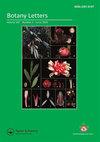三种路灯照明对杨梅叶片形态和生理的影响
IF 1.3
4区 生物学
Q3 PLANT SCIENCES
引用次数: 0
摘要
本文章由计算机程序翻译,如有差异,请以英文原文为准。
The effect of three types of street lighting on the morphology and physiology of the common hackberry (Celtis occidentalis L.) leaves
ABSTRACT Our studies covered the responses of the common hackberry (Celtis occidentalis L.) to artificial lighting at night. We analyzed the effect of three types of lamps used in public lighting: high-pressure sodium lamp (HPS) and two types of LED lamps. Physiological, macro- and micromorphological measurements were carried out during the research. Common hackberry tree was affected by the night light of street lamps, although the tested individuals received natural lighting during the day. Moreover, there were differences observed between the effects of the investigated lamp types. The high-pressure sodium lamp (HPS) resulted in histologically thicker leaves with higher photosynthetic yields, together with more efficient stomatal movements. The LED lamp with a color temperature of 3000 K enhanced the establishment of the photosynthetic apparatus and the growth of the palisade parenchyma. The physiology and histological development of leaves illuminated at night with a narrow-spectrum LED with a color temperature of 1900–2400 K remained inferior compared to those on shoots kept in the dark at night. Our results confirm that the type of the light source is a relevant factor in considering the effects or prevention of light pollution on plant anatomy.
求助全文
通过发布文献求助,成功后即可免费获取论文全文。
去求助
来源期刊

Botany Letters
Agricultural and Biological Sciences-Plant Science
CiteScore
3.10
自引率
6.70%
发文量
54
期刊介绍:
Botany Letters is an international scientific journal, published by the French Botanical Society (Société botanique de France) in partnership with Taylor & Francis. Botany Letters replaces Acta Botanica Gallica, which was created in 1993, building on over a century of renowned publications by the Société botanique de France.
 求助内容:
求助内容: 应助结果提醒方式:
应助结果提醒方式:


